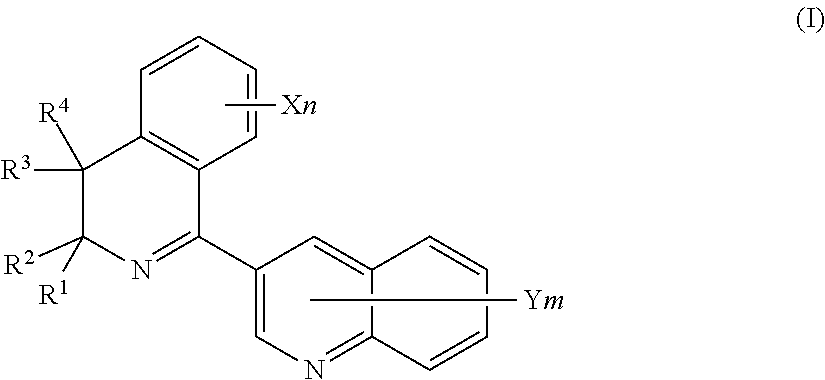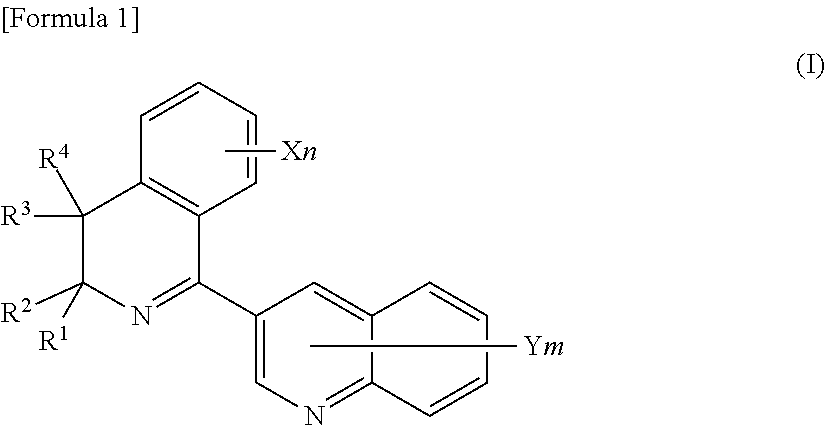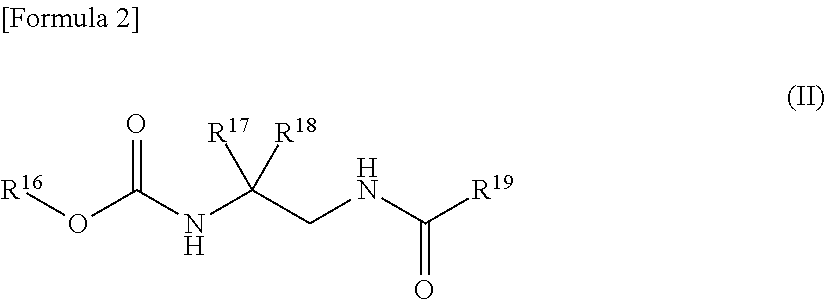Plant disease control composition and method for controlling plant disease by applying the same
a technology of composition and plant disease, applied in the direction of fungicides, heterocyclic compound active ingredients, biocide, etc., can solve the problems of remarkable resistance of plant pathogens to chemical agents, chemical damage to plant materials, etc., and achieve excellent controlling effects (synergistic effects), stable prophylaxis effect, and high plant disease controlling
- Summary
- Abstract
- Description
- Claims
- Application Information
AI Technical Summary
Benefits of technology
Problems solved by technology
Method used
Image
Examples
preparation example 1
Wettable Powder (a1-1)
[0908]Either one of the compounds (10 parts) among Compounds A, B and C as Component I (Group a), either one of the following mentioned compounds (added amount) as Component II (Group b), Neogen Powder (0.5 part), Carplex (0.5 part), GOHSENOL (0.2 part), Radiolite (0.8 part) and H fine powder (used as the remainder so that the total became 100 parts) were crushed and mixed to obtain Wettable powder (a1-1).
[0909]Compound (added amount) as Component II (Group b) was Maneb (88 parts), Oxpoconazole fumarate (5 parts), Captan (66 parts), Boscalid (25 parts), Diethofencarb (6 parts), Procymidone (25 parts), Fludioxonil (10 parts), Thiophanate-methyl (35 parts), Fenhexamid (25 parts), Fluazinam (10 parts), Iminoctadine trialbesilate (20 parts), Polyoxins complex (10 parts), Iprodione (25 parts), Penthiopyrad (5 parts), Simeconazole (5 parts), Azoxystrobin (4 parts), Kasugamycin monohydrochloride (1 part), Validamycin (5 parts), Tricyclazole (5 parts), Ferimzone (5 par...
preparation example 2
Wettable Powder (a2-1)
[0910]Either one of the compounds (5 parts) among Compounds A, B and C as Component I (Group a), either one of the compounds mentioned in Preparation example 1 as Component II (Group b), Neogen Powder (0.5 part), Carplex (0.5 part), GOHSENOL (0.2 part), Radiolite (0.8 part) and H fine powder (used as the remainder so that the total became 100 parts) were crushed and mixed to obtain Wettable powder (a2-1).
preparation example 3
Dust Formulation (b1-1)
[0911]Either one of the compounds (2 parts) among Compounds A, B and C as Component I (Group a), either one of the following mentioned compounds (added amount) as Component II (Group b) and clay (used as the remainder so that the total became 100 parts) were uniformly crushed and mixed to obtain Dust formulation (b1-1).
[0912]Compounds (added amount) as Component II (Group b) were Captan (40 parts), Boscalid (25 parts), Procymidone (25 parts), Thiophanatemethyl (35 parts), Fluazinam (25 parts), Iminoctadine trialbesilate (15 parts), Polyoxins complex (25 parts), Iprodione (25 parts), Simeconazole (10 parts), Flutolanil (5 parts) or Validamycin (0.3 part).
PUM
| Property | Measurement | Unit |
|---|---|---|
| weight ratio | aaaaa | aaaaa |
| diameter | aaaaa | aaaaa |
| resistance | aaaaa | aaaaa |
Abstract
Description
Claims
Application Information
 Login to View More
Login to View More - R&D
- Intellectual Property
- Life Sciences
- Materials
- Tech Scout
- Unparalleled Data Quality
- Higher Quality Content
- 60% Fewer Hallucinations
Browse by: Latest US Patents, China's latest patents, Technical Efficacy Thesaurus, Application Domain, Technology Topic, Popular Technical Reports.
© 2025 PatSnap. All rights reserved.Legal|Privacy policy|Modern Slavery Act Transparency Statement|Sitemap|About US| Contact US: help@patsnap.com



